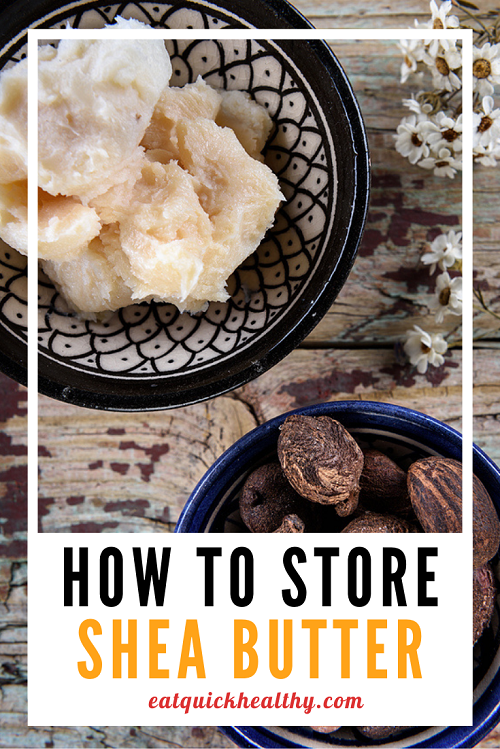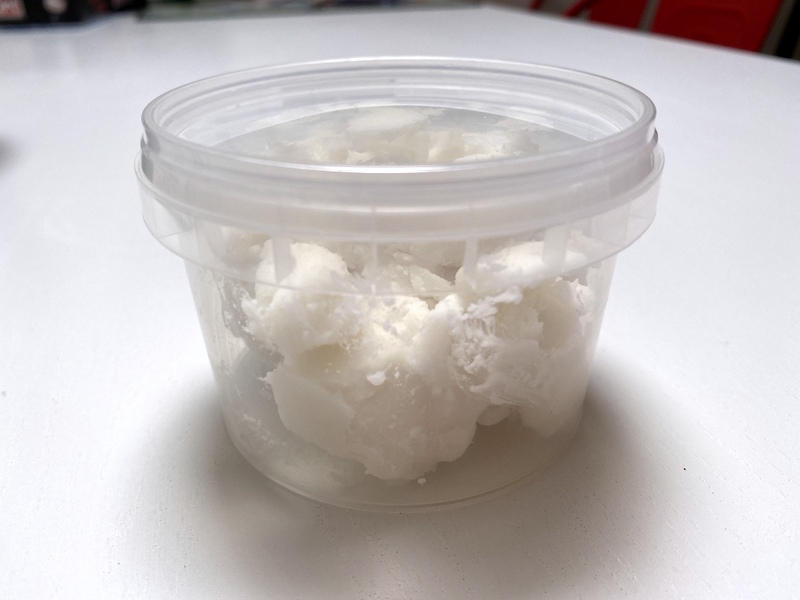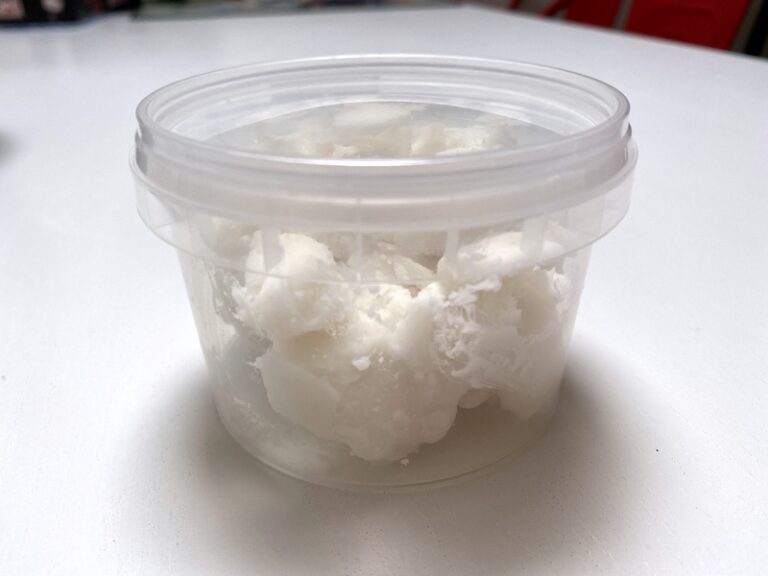If you are like me and love making your own skin care and beauty products, you won’t be a stranger to shea butter.
This great ingredient helps soothe, soften and moisturize skin with many benefits. It’s easy to work with, and I love always having some in the pantry ready for when I need to make my next product. I find this especially important as it’s not something I can easily pick up at the local store.
This means I need to be on top of how to store shea butter so I can keep my shea butter as good and nutrient rich for as long as possible.
I have also occasionally found some shea butter I have forgotten about at the back of the pantry so it’s also important to know how to tell if shea butter has gone bad as part of this storage plan.
So in this guide, I’m going to share exactly what shea butter is, the answer to can shea butter go bad as well as full details for how to store raw shea butter, whether you can freeze it and the unrefined and refined shea butter shelf life.

What Is Shea Butter?
The short answer is that shea butter is a fat extracted from nuts which comes from shea trees, native to West Africa.
But the process of making shea butter is more complicated than this.
Shea trees produce fruit which have seeds inside shells in the middle. These seeds are removed and dried. At this point, the seeds can be taken to factories to produce what’s called refined shea butter or they can be made into unrefined or raw shea butter by hand.
Unrefined shea butter is by far the superior product. This retains many nutrients and benefits of shea butter. Refined shea butter is cheaper and easier to produce but uses high-heat and solvents which destroys much of the benefits of shea butter. It is best avoided.
To make raw shea butter, the seeds are ground into powder and then roasted. Once roasted, the powder is ground again into a dark viscous substance.
This is then hand-kneaded while adding water and then whipped until the oils coagulate on top and the water is on the bottom.
The coagulated oil is removed and boiled. Any impurities rise to the top. They are removed. The remaining shea butter is strained and left to cool. It solidifies into the off-white or ivory color shea butter you are used to seeing.
Shea butter is easy to spread and, along with its cream-like consistency and many nutrients and fatty acids, is great for soothing and moisturizing skin. It’s been used for many purposes over centuries from treating acne to helping burns.
It’s also used as fat in cooking in Africa but it’s not recommended to eat the shea butter found in other countries.
Click here to buy shea butter now and click here for the full differences between refined and unrefined shea butter.
Can Shea Butter Go Bad?
Yes, shea butter can go bad. Thanks to containing fats and oils, it can go through the process of rancidification which is when the fats and oils decompose. This happens from exposure to light, air and moisture.
As part of this, it smells bad and loses many of its benefits. The main way you can tell if your shea butter is bad is that it smells like rotting food, vinegar or sour. Shea butter should have a smoky BBQ/nutty smell and if it smells like anything else, I recommend tossing it out.
It’s also possible for shea butter to go moldy if it’s been in contact with water.
The best way to stop shea butter going bad for as long as possible is to store it properly.
Read more about how to tell if shea butter has gone bad here.
How To Store Shea Butter
Learning how to store unrefined shea butter is straightforward. It’s all about avoiding the things that help it go rancid which are air, light and moisture.
There are a few things you should do to achieve this.
1. Store Shea Butter In An Airtight Container
The most important step in how to store pure shea butter is to use airtight containers for shea butter.

You want to ensure the container will protect it from air and moisture. It can be plastic or glass but must be something that will fully seal.
2. Store Shea Butter In A Cool, Dark, Dry Pantry
To protect shea butter from light and moisture, store it in a cool, dark pantry. This will help it keep good for as long as possible.
3. Store Shea Butter In A Refrigerator In Warmer Climates
If you are wondering, can I store shea butter in the fridge? The answer is yes! However, it may not be necessary. Shea butter does not need to be in the refrigerator to have a good shelf life.
However, if your temperatures are over 75 degrees F, you should keep it in your fridge. This is because at 75 degrees, the shea butter can start melting. It is not good for the shea butter to keep melting and solidifying again, and it can lead to it being grainy and not good quality.
If you want to know how to store whipped shea butter, it’s in exactly the same way.
Can You Freeze Shea Butter?
Yes, it is possible to freeze shea butter. However, since it has a long shelf life in the pantry or fridge this is not needed or recommended.
What Is The Shea Butter Shelf Life?
How long shea butter lasts depends on:
- What type of shea butter it is – unrefined or refined
- How it is stored
- How it is transported from its origin to you
Generally, unrefined or raw shea butter will last about 24 months from manufacturing to starting to go rancid. Refined shea butter can last a lot longer. While this might make refined shea butter seem more attractive, remember the refining process removes much of the nutrients and benefits of the shea butter, so it is not recommended to buy this type.
Shea butter which is raw and handmade can also vary depending on exactly how it was made with different batches able to have slightly different shelf lives.
For all these reasons, the refined and unrefined shea butter shelf life times given below are only approximate.
| Type of Shea Butter | Shelf Life |
| Unrefined | 2 years |
| Refined | 3+ years |
Conclusion
The answer to how to store raw unrefined shea butter or refined shea butter is quite straightforward – in an airtight container in a dark, dry, cool pantry.
If you live in a warmer climate, edit this to store it in an airtight container in the fridge.
If you do this, your unrefined shea butter should last around 2 years with refined shea butters able to last longer.
Find more useful guides to using shea butter here, an in depth guide to how to tell if shea butter has gone bad here and whether shea butter is edible or not here.



Comments are closed.